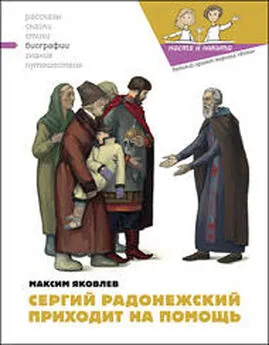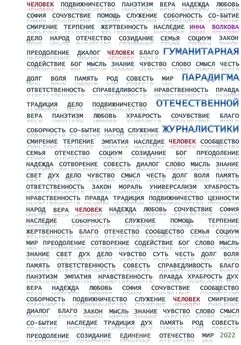Максим Шапиро - Гуманитарная помощь
- Название:Гуманитарная помощь
- Автор:
- Жанр:
- Издательство:неизвестно
- Год:2015
- ISBN:нет данных
- Рейтинг:
- Избранное:Добавить в избранное
-
Отзывы:
-
Ваша оценка:
Максим Шапиро - Гуманитарная помощь краткое содержание
Гуманитарная помощь - читать онлайн бесплатно полную версию (весь текст целиком)
Интервал:
Закладка:
113
Quastler, H. (1964). The emergence of biological organization. New Haven: Yale University Press.
114
http://news.microsoft.com/2002/02/25/microsoft-terrarium-game-demonstrates-continuing-developer-enthusiasm-for-net-platform/
115
http://habrahabr.ru/company/microsoft/blog/130755/
116
King, A. J., Wilson, A. M., Wilshin, S. D., Lowe, J., Haddadi, H., Hailes, S., & Morton, A. J. (2012). Selfish-herd behaviour of sheep under threat. Current Biology, 22(14), R561-R562.
117
Simon, H. A. (1956). "Rational Choice and the Structure of the Environment". Psychological Review 63 (2): 129–138. doi:10.1037/h0042769. (page 129: "Evidently, organisms adapt wel enough to ‘satisfice’; they do not, in general, ‘optimize’."; page 136: "A ‘satisficing’ path, a path that wil permit satisfaction at some specified level of all its needs.")
118
Gigerenzer, G., & Selten, R. (Eds.). (2002). Bounded rationality: The adaptive toolbox. Mit Press.
119
Jablonka, E., & Lamb, M. J. (2014). Evolution in Four Dimensions, revised edition: Genetic, Epigenetic, Behavioral, and Symbolic Variation in the History of Life. MIT press.
120
Aplin, L. M., Farine, D. R., Morand-Ferron, J., Cockburn, A., Thornton, A., & Sheldon, B. C. (2014). Experimentally induced innovations lead to persistent culture via conformity in wild birds. Nature.
121
Lyons, D. E., Young, A. G., & Keil, F. C. (2007). The hidden structure of overimitation. Proceedings of the National Academy of Sciences, 104(50), 19751-19756.
122
Topál, J., Gergely, G., Miklósi, Á., Erdőhegyi, Á., & Csibra, G. (2008). Infants' perseverative search errors are induced by pragmatic misinterpretation. Science, 321(5897), 1831-1834.
123
Tennie, C., Call, J., & Tomasel o, M. (2009). Ratcheting up the ratchet: on the evolution of cumulative culture. Philosophical Transactions of the Royal Society B: Biological Sciences, 364(1528), 2405-2415.
124
Biémont, C., & Vieira, C. (2006). Genetics: junk DNA as an evolutionary force. Nature, 443(7111), 521-524.
125
Dawkins, R. (1993). Viruses of the mind. Dennett and his critics: Demystifying mind, 13-27.
126
Whiten, A., Horner, V., & De Waal, F. B. (2005). Conformity to cultural norms of tool use in chimpanzees. Nature, 437(7059), 737-740.
127
Henrich, J., & Boyd, R. (1998). The evolution of conformist transmission and the emergence of between-group differences. Evolution and human behavior, 19(4), 215-241.
128
Asch, S. E. (1956). Studies of independence and conformity: I. A minority of one against a unanimous majority. Psychological monographs: General and applied, 70(9), 1-70.
129
Bond, R., & Smith, P. B. (1996). Culture and conformity: A meta-analysis of studies using Asch's (1952b, 1956) line judgment task. Psychological bul etin, 119(1), 111.
130
Klucharev, V., Hytönen, K., Rijpkema, M., Smidts, A., & Fernández, G. (2009). Reinforcement learning signal predicts social conformity. Neuron, 61(1), 140-151.
131
Edelson, M., Sharot, T., Dolan, R. J., & Dudai, Y. (2011). Following the crowd: brain substrates of long-term memory conformity. science, 333(6038), 108-111.
132
Jost, J. T., & Banaji, M. R. (1994). The role of stereotyping in system‐justification and the production of false consciousness. British Journal of Social Psychology, 33(1), 1-27.
133
Samuelson, W., & Zeckhauser, R. (1988). Status quo bias in decision making. Journal of risk and uncertainty, 1(1), 7-59.
134
Jost, J., & Hunyady, O. (2003). The psychology of system justification and the palliative function of ideology. European review of social psychology, 13(1), 111-153.
135
Haigh, J. (1978). The accumulation of deleterious genes in a population—Mul er's ratchet. Theoretical population biology, 14(2), 251-267.
136
Clarke, C. A., Mani, G. S., & Wynne, G. (1985). Evolution in reverse: clean air and the peppered moth. Biological Journal of the Linnean Society, 26(2), 189-199.
137
Hayden, E. J., Ferrada, E., & Wagner, A. (2011). Cryptic genetic variation promotes rapid evolutionary adaptation in an RNA enzyme. Nature, 474(7349), 92-95.
138
Vigilant, L., Stoneking, M., Harpending, H., Hawkes, K., & Wilson, A. C. (1991). African populations and the evolution of human mitochondrial DNA. Science, 253(5027), 1503-1507.
139
Barker, G. (2006). The Agricultural Revolution in Prehistory: Why did Foragers become Farmers?: Why did Foragers become Farmers? . Oxford University Press.
140
Hayek, F. A. (2011). The fatal conceit: The errors of socialism. University of Chicago Press.
141
Hamilton, W. D. (1971). Geometry for the selfish herd. Journal of theoretical Biology, 31(2), 295-311.
142
Dawkins, R. (2006). The selfish gene (No. 199). Oxford university press.
143
Henrich, J., & Boyd, R. (2001). Why people punish defectors: Weak conformist transmission can stabilize costly enforcement of norms in cooperative dilemmas. Journal of theoretical biology, 208(1), 79-89.
144
Henrich, J., McElreath, R., Barr, A., Ensminger, J., Barrett, C., Bolyanatz, A., .. & Ziker, J. (2006). Costly punishment across human societies. Science, 312(5781), 1767-1770.
145
Boyd, R., Gintis, H., Bowles, S., & Richerson, P. J. (2003). The evolution of altruistic punishment. Proceedings of the National Academy of Sciences, 100(6), 3531-3535.
146
Choi, J. K., & Bowles, S. (2007). The coevolution of parochial altruism and war. science, 318(5850), 636-640.
147
Reeve, H. K., & Hölldobler, B. (2007). The emergence of a superorganism through intergroup competition. Proceedings of the National Academy of Sciences, 104(23), 9736-9740.
148
Bowles, S. (2009). Did warfare among ancestral hunter-gatherers affect the evolution of human social behaviors?. Science, 324(5932), 1293-1298.
149
De Dreu, C. K., Greer, L. L., Van Kleef, G. A., Shalvi, S., & Handgraaf, M. J. (2011). Oxytocin promotes human ethnocentrism. Proceedings of the National Academy of Sciences, 108(4), 1262-1266.
150
Ginges, J., Hansen, I., & Norenzayan, A. (2009). Religion and support for suicide attacks. Psychological science, 20(2), 224-230.
151
Israel, S., Lerer, E., Shalev, I., Uzefovsky, F., Riebold, M., Laiba, E., .. & Ebstein, R. P. (2009). The oxytocin receptor (OXTR) contributes to prosocial fund allocations in the dictator game and the social value orientations task. PLoS One, 4(5), e5535.
152
Andrés Guzmán, R., Rodríguez-Sickert, C., & Rowthorn, R. (2007). When in Rome, do as the Romans do: the coevolution of altruistic punishment, conformist learning, and cooperation. Evolution and Human Behavior, 28(2), 112-117.
153
Jones, N., & Houben, A. (2003). B chromosomes in plants: escapees from the A chromosome genome?. Trends in plant science, 8(9), 417-423.
154
Larracuente, A. M., & Presgraves, D. C. (2012). The selfish Segregation Distorter gene complex of Drosophila melanogaster. Genetics, 192(1), 33-53.
155
Raftery, L. A., Twombly, V., Wharton, K., & Gelbart, W. M. (1995). Genetic screens to identify elements of the decapentaplegic signaling pathway in Drosophila. Genetics, 139(1), 241-254.
156
Doolittle, W. F., & Sapienza, C. (1980). Selfish genes, the phenotype paradigm and genome evolution. Nature, 284(5757), 601-3.
157
Burt, A., & Koufopanou, V. (2004). Homing endonuclease genes: the rise and fall and rise again of a selfish element. Current opinion in genetics & development, 14(6), 609-615.
158
Hurst, L. D., & Hamilton, W. D. (1992). Cytoplasmic fusion and the nature of sexes. Proceedings of the Royal Society of London. Series B: Biological Sciences, 247(1320), 189-194.
159
Schuiling, G. A. (2004). Cancer: A reproductive strategy of" ultra-selfish" genes?. Journal of Psychosomatic Obstetrics & Gynecology, 25(3-4), 313-317.
160
Charlton, B. G. (1996). Endogenous parasitism: A biological process with implications for senescence. Evolutionary Theory, 11, 119-124.
161
Fehr, E., & Gächter, S. (2000). Cooperation and punishment in public goods experiments. American Economic Review, 980-994.
162
De Quervain, D. J. F., Fischbacher, U., Treyer, V., Schel hammer, M., Schnyder, U., Buck, A., & Fehr, E. (2004). The neural basis of altruistic punishment. Science.
163
Mealey, L., Daood, C., & Krage, M. (1996). Enhanced memory for faces of cheaters. Ethology and Sociobiology, 17(2), 119-128.
164
Bhatt, M. A., Lohrenz, T., Camerer, C. F., & Montague, P. R. (2012). Distinct contributions of the amygdala and parahippocampal gyrus to suspicion in a repeated bargaining game. Proceedings of the National Academy of Sciences, 109(22), 8728-8733.
165
Bel , R., & Buchner, A. (2009). Enhanced source memory for names of cheaters. Evolutionary Psychology.
166
Anderson, E., Siegel, E. H., Bliss-Moreau, E., & Barrett, L. F. (2011). The visual impact of gossip. Science, 332(6036), 1446-1448.
167
Mathew, S., & Boyd, R. (2011). Punishment sustains large-scale cooperation in prestate warfare. Proceedings of the National Academy of Sciences, 108(28), 11375-11380.
168
Hil , K. & Kaplan, H. 1989. Population and dry-season subsistence strategies of the recently contacted Yora of Peru. National Geographic Research 5:317-34.
169
Marlowe, F. W. (2007). Hunting and Gathering The Human Sexual Division of Foraging Labor. Cross-Cultural Research, 41(2), 170-195.
170
Hawkes, K., & Bliege Bird, R. (2002). Showing off, handicap signaling, and the evolution of men's work. Evolutionary Anthropology: Issues, News, and Reviews, 11(2), 58-67.
171
Kaplan, H., & Hil , K. (1985). Hunting ability and reproductive success among male Ache foragers: Preliminary results. Current anthropology, 131-133.
172
Goldberg, S. (1973). The inevitability of patriarchy (Vol. 73). New York: Morrow.
173
Bowles, S. (2011). Cultivation of cereals by the first farmers was not more productive than foraging. Proceedings of the National Academy of Sciences, 108(12), 4760-4765.
Читать дальшеИнтервал:
Закладка:








